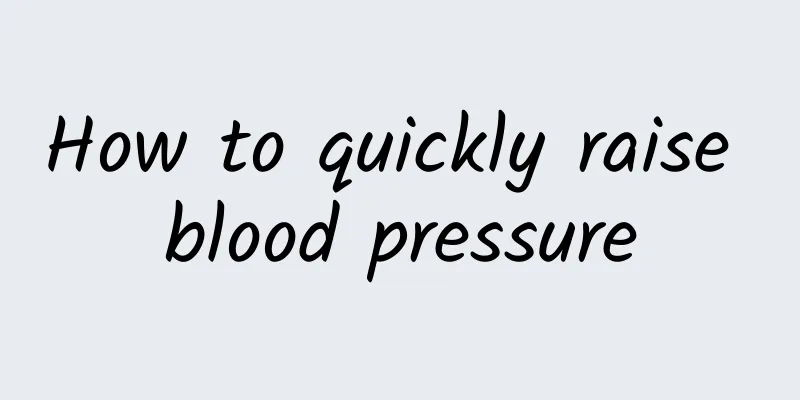Bronchodilator hemoptysis medication

|
Hemoptysis caused by bronchiectasis is a very pathological disease. We need to take medicine according to the doctor's advice, and severe hemoptysis also requires special treatment. Generally, vasopressin or epinephrine is used for treatment, and the dosage of each injection should be based on the doctor's advice. We can learn about the medication rules for hemoptysis caused by bronchiectasis by looking at the practices introduced in the article. 1. Fiberoptic bronchoscope: For some patients with bronchiectasis whose bleeding is not acute, 0.1% epinephrine or norepinephrine 5ml can be dripped into the bleeding focus through fiberoptic bronchoscope. For patients who are not responsive to drug treatment and whose specific bronchial dilatation lesions cannot be identified, 500 ml of 4°C cold saline plus 4 mg of epinephrine can be injected into the bleeding lung segment in several doses. After staying for 1 minute, suction should be given, and oxygen or high-frequency ventilation should be given through a mask at the same time. For patients with massive hemoptysis who cannot undergo surgery or who still have massive bleeding bronchiectasis after the above-mentioned fiberbronchoscope treatment, a balloon catheter can be inserted into the corresponding bleeding bronchus through a fiberbronchoscope and the balloon can be inflated with air or water to block the bleeding bronchus to prevent drowning from the bleeding, strengthen the lungs and compress to stop bleeding. After 24 hours, the balloon can be relaxed and the catheter can be removed when there is no further bleeding after a few hours of observation. 2. Hemostatic drugs 1. Posterior pituitary hormone: has a strong vasoconstrictor effect. Usually 10 to 20 U are added to 250 to 500 ml of liquid and administered intravenously. In case of severe hemoptysis, 10U is injected intravenously in 20-40ml of liquid, followed by 10-20U intravenous drip. The daily dose can be 20-60U. For severe hemoptysis, it is usually recommended to take the medication continuously for 12 to 24 hours to avoid taking a single large dose and gradually reduce the dose after it is effective. Use with caution in patients with hypertension, coronary heart disease and pregnancy. 2. General hemostatic drugs usually work by improving the coagulation mechanism, capillary and platelet function. In fact, common hemoptysis is not or not entirely due to the above mechanism, so their therapeutic effects are not certain and cannot be used as the main method for treating hemoptysis. This type of drug includes aminocaproic acid (6-aminocaproic acid, PAMBA) and aminobenzoic acid (4-carboxybenzylamine, EACA) which are anti-fibrinolytic; ethamine (Ethiophene) and carbachol (Anlox) which increase platelet and capillary function; vitamin K which participates in prothrombin synthesis; and protamine which counteracts heparin. Traditional Chinese medicine includes Yunnan Baiyao and various hemostatic powders. |
<<: Differential diagnosis of hemoptysis
>>: What is the reason for the severe itching in the middle of the night?
Recommend
How long does it take to boil Chinese medicine?
Friends who take Chinese medicine to treat relate...
What medicine can cure pharyngitis and cough quickly?
After suffering from pharyngitis, it is very dist...
Side effects of strychnine powder
Everything in the world has its pros and cons, an...
Glucosamine sulfate
Medicine is very common. It is very helpful in tr...
What to eat to promote skin repair?
In our lives, human skin will suffer certain dama...
Pain under left ribs when breathing
As we all know, the human body has 12 pairs of ri...
How long does moxibustion take?
Generally speaking, when we need to choose to tre...
What medicine should I take for acne on my face caused by inflammation?
When we feel unhappy, we have no way to vent and ...
Effects of Fritillaria Soothing Cream
Fritillaria Soothing Cream is composed of various...
Does hand, foot and mouth disease affect pregnant women?
Hand, foot and mouth disease is a highly contagio...
What should I do if my child has trouble sleeping? These 9 points must be followed!
Children are in a critical stage of physical and ...
What is Sjögren's syndrome?
Sjögren's syndrome is a common autoimmune dis...
What to do if you have kidney stones and hematuria
For hematuria caused by kidney stones, patients s...
Best treatment for yellow warts
Xanthelasma palpebral may sound unfamiliar to us,...
The savior of dark-skinned girls! Do it a few times and your whole body will become white
Every girl hopes to have snow-white skin like Sno...









